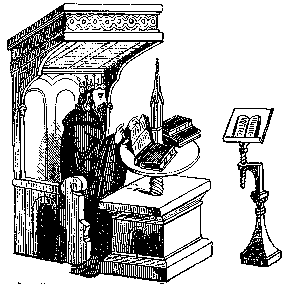
If you are looking at this page without frames, there is more information about medieval writing to be found by going to the home page (framed) or the site map (no frames).
| Why Read It? (and how to do it...) | |
 |
|
| The sum total of recorded knowledge from the middle ages has come down to us in the form of manuscripts. One could say handwritten manuscripts, but that would be a tautology. Manuscripts are, by definition, handwritten. Furthermore, there were no sound recordings, no films, no television and no internet. You might think that makes it hard to learn very much about human society, but the art of reading manuscripts is not just decoding the words. It is also about finding creative ways to interpret them. No, they were not all written by monks and they were not all religious, but even when they were, there can be surprising things to find in them. | |
| The scholars who write our medieval history books have all, at some time, had to spend many hours in the archives decoding medieval handwriting in order to acquire the evidence they needed to draw their conclusions. Medieval books and documents have been produced in printed and translated editions, but any new evidence for the historian, the social scientist or the genealogist must be acquired through the reading of handwritten documents. | |
| The quantity of medieval manuscript material stored in archives, libraries and private collections is vast. There is no shortage of historical projects to tackle. Exquisite illuminated manuscripts, known to all art gallery attenders, are themselves not rare. Added to these are immense quantities of often scruffy and grubby parchment sheets and rolls which lack the aesthetic charm of their more elegant cousins, but are a mine of historical information and social data. | |
| Students are often nervous of the process of learning to read these original documents. The fine scholars who pioneered the art of document decoding, or paleography and diplomatic, were meticulous workers with the capacity to record and comprehend massive amounts of intricate detail, but they were not, on the whole, snappy and arresting communicators. Their instruction manuals and guides can be very heavy going. | |
| This website includes some practical paleography exercises which are designed to be a thinking person's puzzles rather than terrifying chunks of esoterica. This section contains some introductory material about the whole process of reading medieval manuscript material before you launch into some of the more detailed material on the site. There is also some background material to fit them into a context and understand what they are on about. Read, enjoy! | |
|
If you are looking at this page without frames, there is more information about medieval writing to be found by going to the home page (framed) or the site map (no frames). |
|